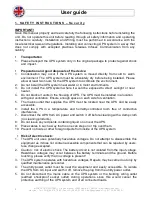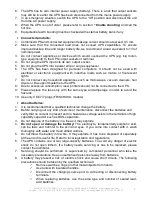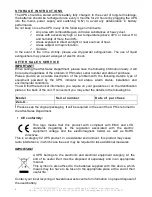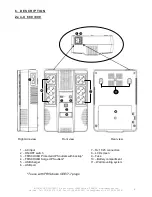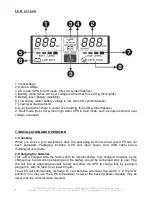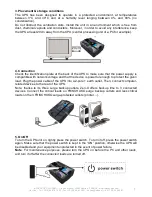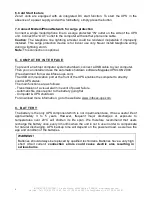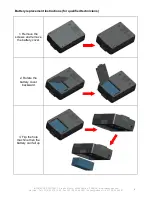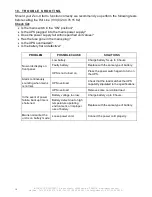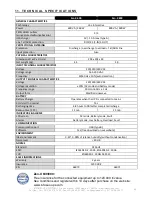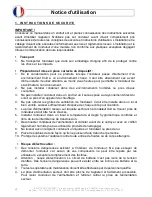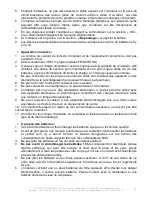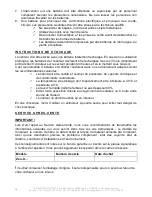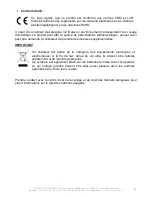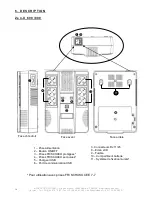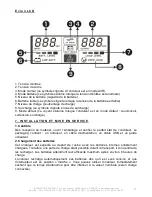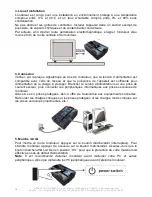
INFOSEC UPS SYSTEM - 15, rue du Moulin - 44880 Sautron - FRANCE - www.infosec-ups.com
Hot Line
– Tel + 33 (0)2 40 76 15 82 - Fax + 33 (0)2 40 94 29 51 - [email protected] – 04 17 AA 24 205 01
3
6. The UPS has its own internal power supply (battery). There is a risk that output sockets
may still be live after the UPS has been disconnected from the mains power supply.
7.
In an emergency situation, switch the UPS to the “Off” position and disconnect the unit
from the AC power supply.
8. When the UPS is out of order, please refer to section:
“trouble shooting
” and call the
hot line.
9. Equipotential earth bonding must be checked with external battery bank if any
Connected products:
1. Combined UPS and connected equipment leakage current should not exceed 3,5 mA.
2. Make sure that the connected load does not exceed UPS capabilities. To ensure
improved backup time and longer battery life, we recommend a load equivalent to 1/3 of
nominal power.
3. Do not connect appliances or devices which would overload the UPS (e.g. big motor-
type equipment)) to the UPS output sockets or terminal.
4. Do not plug the UPS input into its own output socket.
5. Do not plug the UPS into a power strip or surge suppressor.
6. The UPS has been designed for personal computers. It should not be used with
electrical or electronic equipment with inductive loads such as motors or fluorescent
lights.
7. Do not connect any household appliances such as microwaves, vacuum cleaners, hair
dryers or life-support systems to the UPS.
8. Due to excessive consumption, laser printers should not be connected to the UPS.
9. Please replace the fuse only with the same type and amperage in order to avoid fire
hazards.
10. Use only CEE 7/7 plugs (FR/SCHUKO models)
About batteries:
1. It is recommended that a qualified technician change the battery.
2. Before carrying out any kind of service or maintenance, disconnect the batteries and
verify that no current is present and no hazardous voltage exists in the terminals of high
capability capacitor such as BUS-capacitors.
3. Do not dispose of the battery in a fire as it may explode.
4.
Do not open or damage the battery!
The electrolyte, fundamentally sulphuric acid,
can be toxic and harmful to the skin and eyes. If you come into contact with it, wash
thoroughly with water and clean dirtied clothes.
5. Do not throw the battery into a fire. It may explode. It has to be disposed of separately
at the end of its useful life. Refer to local legislation and regulations.
6. The UPS contains one or two large-capacity batteries. To avoid any danger of electric
shock do not open it/them. If a battery needs servicing or has to be replaced, please
contact the distributor.
7. Servicing should be performed or supervised by competent personnel who take the
necessary precautions. Keep unauthorised personnel away from batteries.
8. A battery may present a risk of electric shock and cause short circuits. The following
precautions should be taken by the qualified technician:
Remove watches, rings or other metal objects from hands.
Use tools with insulated handles.
Disconnect the charging source prior to connecting or disconnecting battery
terminals.
When replacing batteries, use the same type and number of sealed lead-
acid batteries.


